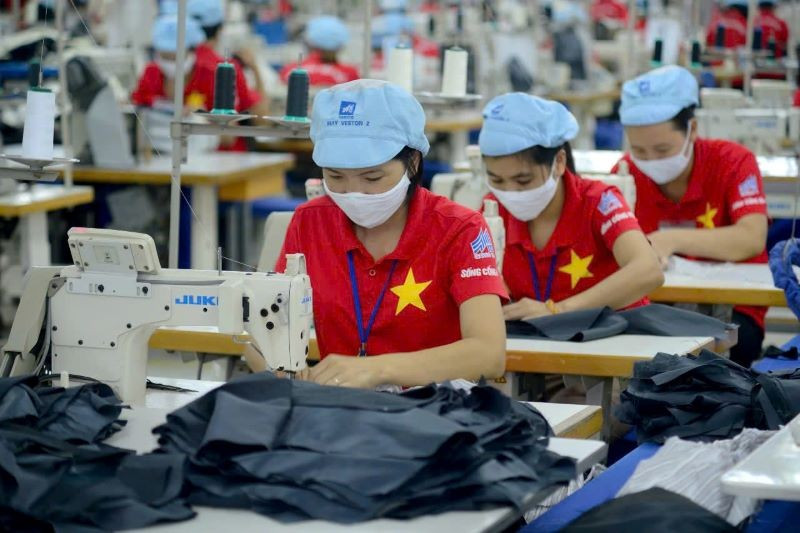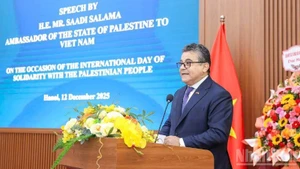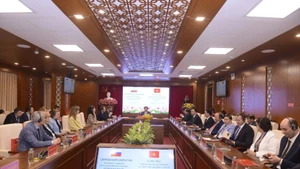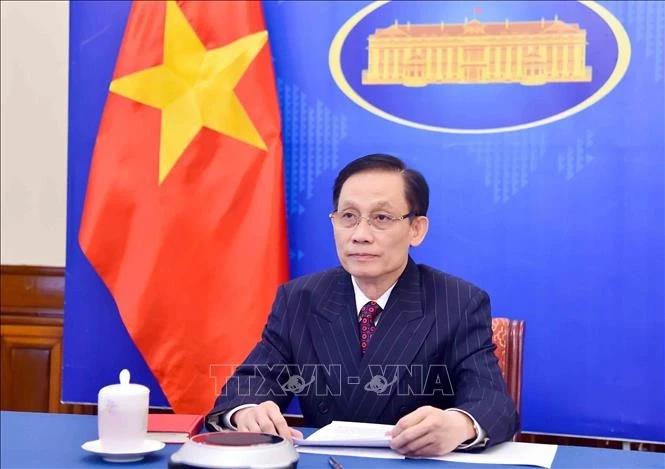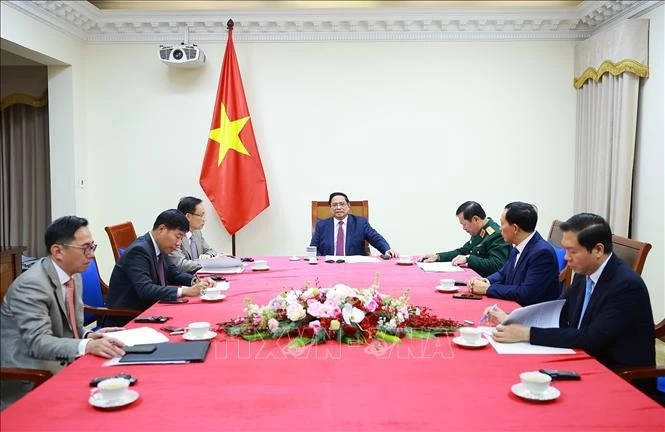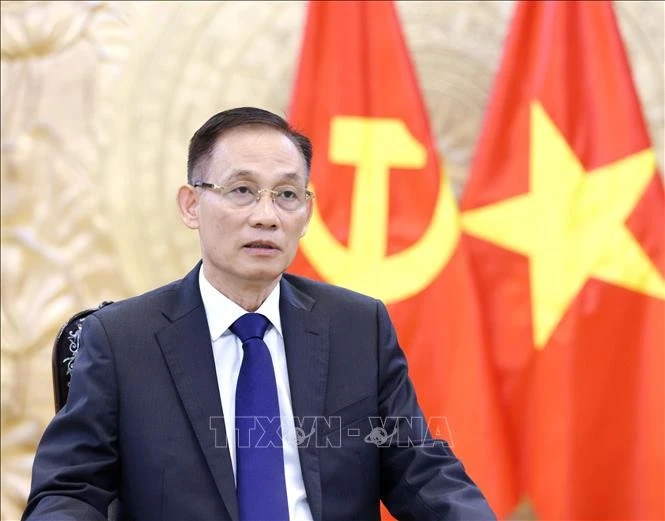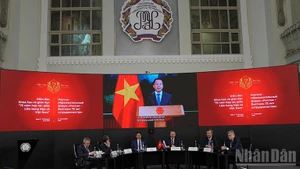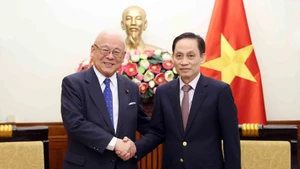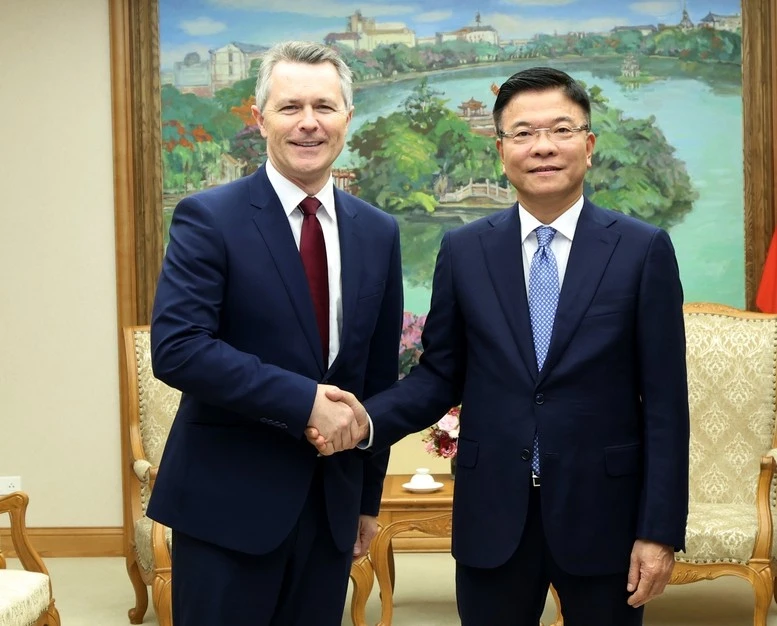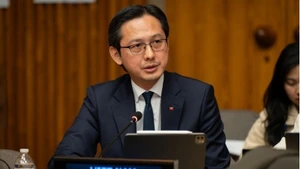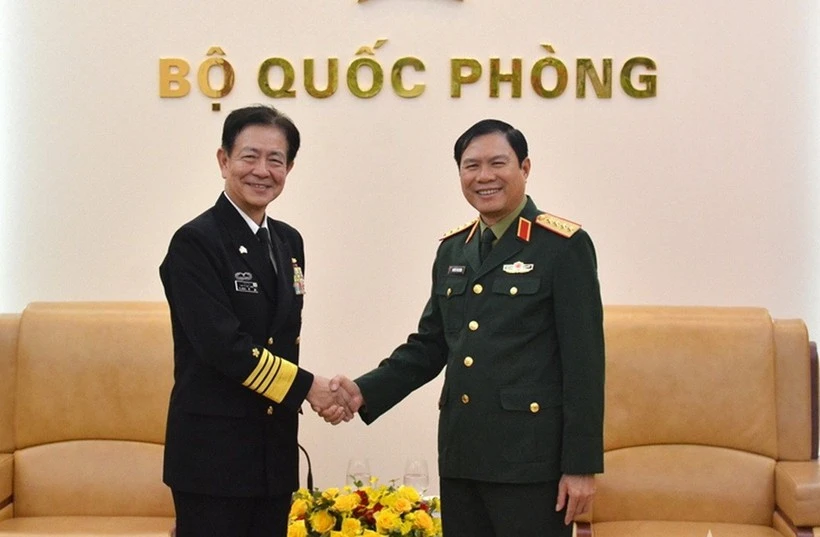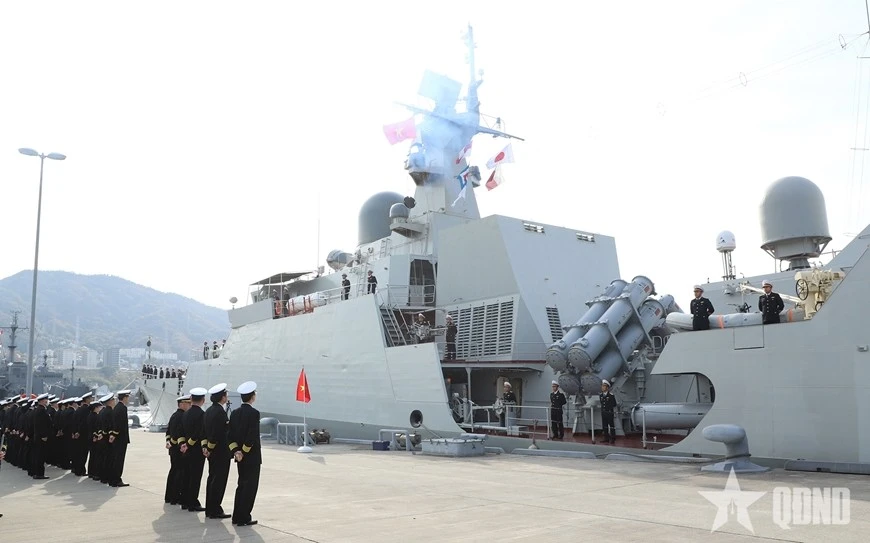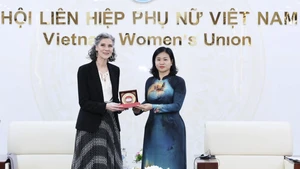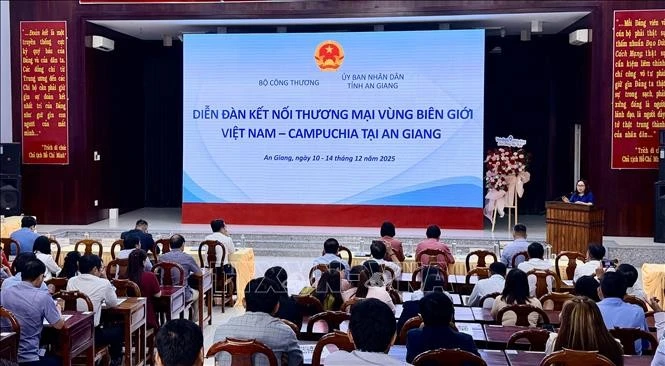A journalist from Nhan Dan Newspaper spoke with Pham Tan Cong, President of the Vietnam Chamber of Commerce and Industry (VCCI), about the impact of these tariff policies and directions for supporting the business community in the future.
Journalist: How has the US decision to impose a 46% tariff, followed by a 90-day postponement with a temporary 10% rate, affected the mindset and operations of Vietnamese enterprises?
VCCI President Pham Tan Cong: President Donald Trump’s initial decision was a "shock" to the business community, particularly for key export sectors such as textiles, footwear, furniture, and electronic components. The US is a major export market for Vietnam, with trade turnover reaching nearly 120 billion USD, an increase of 23.2% (22.48 billion USD) from the previous year, accounting for almost 30% of the country’s total export turnover.
If implemented, such a high tariff would significantly increase costs and reduce the competitiveness of Vietnamese goods compared to those from countries like Mexico, India, or Thailand. Many enterprises were thrown into confusion, fearing order cancellations, production cutbacks, and even workforce reductions.
The 90-day postponement and reduction to a 10% tariff show that the US remains open to negotiation and cooperation with Vietnam. This is a “golden time” for businesses to regain composure, reassess their strategies, and coordinate closely with the government in upcoming talks. I want to stress that Vietnamese enterprises must maintain a proactive, calm, intelligent, and resilient mindset. They should not be pessimistic, panicked, or hesitant, but rather confident in overcoming challenges and turning them into opportunities. Instead of focusing solely on difficulties, this should be viewed as an opportunity to restructure, harness internal strengths, and explore new directions. That said, careful preparation for all possible scenarios, including unsuccessful negotiations, remains essential.
Journalist: How do you think Vietnamese businesses should make the most of this 90-day postponement to minimise risks and adapt to the new situation?
VCCI President Pham Tan Cong: This is not the first time Vietnam has faced major global market disruptions. The government and enterprises have learned from past experiences, and I believe Vietnam will always remain creative, clever, and flexible in seizing opportunities to find new growth drivers.
Businesses should review their entire supply chain and the list of products exported to the US, re-evaluate those at high risk of incurring tariffs, and prioritise alternatives such as increasing local content and reducing dependency on imported raw materials, especially from countries facing high US tariffs. This not only helps reduce risks of origin-based tariffs but also increases the added value of Vietnamese products. At the same time, businesses need to enhance their competitiveness by investing in technological innovation, improving production processes, and building strong brands, which will better equip them to withstand trade barriers.
Journalist: Some of Vietnam’s export sectors, like seafood and wood products, still rely heavily on the US market. What recommendations does VCCI have for businesses to effectively diversify their export markets?
VCCI President Pham Tan Cong: Reality has shown that relying on a single market always entails risks. Vietnam is now a member of numerous free trade agreements (FTAs), such as the CPTPP, EVFTA, and RCEP. These are significant advantages for businesses to expand globally.
While awaiting a final decision on tariff negotiations with the US, businesses should step up exports to potential markets such as the European Union (EU), Japan, South Korea, and ASEAN countries, where Vietnam enjoys tax benefits under effective FTAs. This helps diversify markets, products, and supply chains.
For example, the EVFTA has enabled strong growth in Vietnam’s textile and seafood exports to the EU, with textile exports reaching nearly 5 billion USD in 2024. Similarly, Japan and South Korea are key markets for electronics and processed agricultural products, with export values reaching approximately 4.6 billion USD and 4 billion USD, respectively (in 2024).
To support businesses in accessing new markets, VCCI is promoting trade promotion programmes, organising fairs, and connecting Vietnamese businesses with international partners. We also encourage enterprises to carefully study the tastes and standards of each market to tailor their products accordingly.
The EU, for instance, demands high standards for environmental and food safety. However, if these standards are met, Vietnamese businesses can build lasting credibility.
Simultaneously, domestic market development should also be prioritised. With a youthful population and a large market of 100 million people, this is a solid “support base” for Vietnamese enterprises to tap into. This will gradually reduce dependence on exports, especially as the government is rolling out policies to boost domestic consumption and ensure growth of over 8% this year, aiming for double-digit growth in the coming years.
Journalist: What specific proposals has VCCI made to the government to help businesses overcome difficulties posed by US tariff policies?
VCCI President Pham Tan Cong: Recent diplomatic efforts, such as the phone call between General Secretary To Lam and President Donald Trump, or Deputy Prime Minister Ho Duc Phoc’s trip to the US, are steps in the right direction. VCCI has been closely coordinating with the government to offer support measures for businesses in this context.
Recently, VCCI has actively engaged with partners such as the US Chamber of Commerce, the US-ASEAN Business Council, and the Chambers of Commerce in Los Angeles and San Francisco to form a business coalition that collectively voices opposition to the US’s high tariff imposition on Vietnamese goods. This strengthens the government’s hand in pushing for bilateral negotiations.
The aim is not only to reduce the tariff rate but also to work toward a long-term trade agreement that establishes a stable legal framework for Vietnamese exporters.
The Vietnamese business community hopes the government will continue to implement financial support packages such as interest rate cuts, debt rescheduling, and temporary tax and fee exemptions to ease pressure, especially for small and medium-sized enterprises.
Additionally, the government should accelerate public investment disbursement to stimulate the economy, create more jobs, and boost domestic consumption. More training and consulting programmes are needed to help businesses with risk management and international integration. A long-term strategy is also essential to restructure the economy, reduce reliance on raw exports, and strengthen high-tech and deep-processing industries. This would not only elevate Vietnam’s position in the global supply chain but also mitigate risks from the protectionist policies of other countries.
Journalist: Thank you for sharing a comprehensive view on the challenges and opportunities facing Vietnamese enterprises in light of US tariff policies. With the support of the government, ministries, and organisations like VCCI, the Vietnamese business community can indeed stay calm and confident, transforming challenges into opportunities for sustainable growth in the future.
